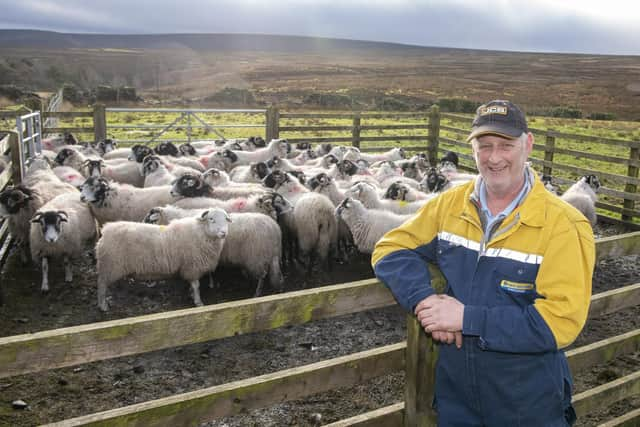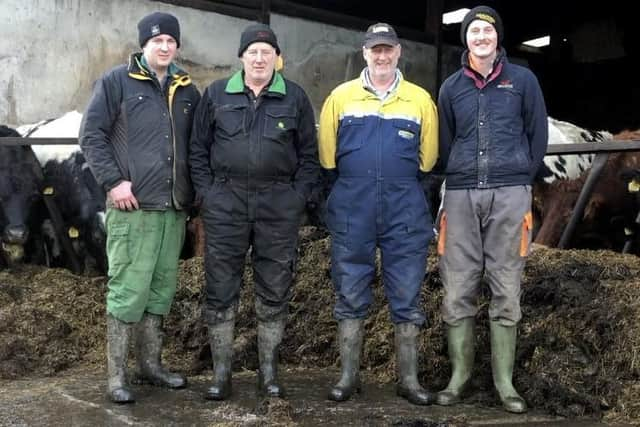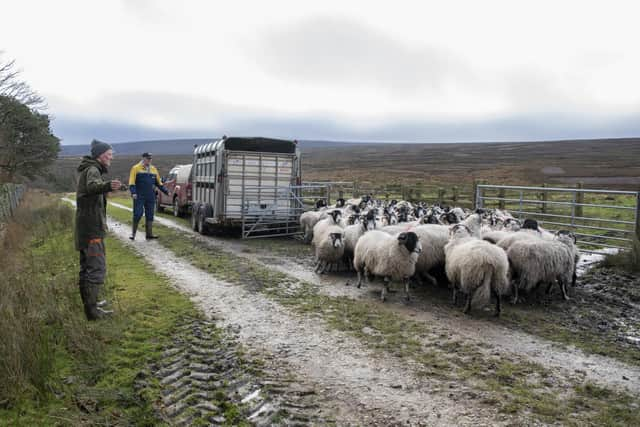Tug o' war champion brothers pulling together on family farm in the hills near Sheffield
A century ago the feats of brothers Andrew and Chris Howe as part of a twelve-time consecutive world champion tug o’ war team would probably have seen them win several Olympic gold medals when it was included in the Games.
Andrew said that by far the brothers’ biggest accomplishment on the farm has been to pull together to progress Daisy Hill Farm in Flouch where parents Arthur and Vera Howe came as tenants in 1959.
Advertisement
Hide AdAdvertisement
Hide Ad“Mum and Dad bought the farm in the 1970s. Dad passed away when he was just 59 which meant that Chris and I began running the farm in our mid-20s. Today our sons Ryan and Matthew are now at the same age we were then and are now playing their part.


“Having plenty of us here is a good thing and everyone gets involved including our daughters Lauren and Rebecca and our wives Sally and Sue.”
The farm has always been based around livestock with some cereal cropping, but in recent times agricultural contracting has begun making up a larger part of the farm income.
Andrew said the brothers and sons are all involved across the whole farming business but that it is Chris’s son Matthew who has moved the contracting forward more recently.
Advertisement
Hide AdAdvertisement
Hide Ad“Ryan and Matthew work together really well, as do Chris and I. Matthew is the driving force behind the contracting and loves the farm machinery side; Ryan loves being out on the moors working his sheepdogs, shepherding and drystone walling. They’re both good shearing lads.


“Because Chris and I have sons we obviously needed to have different and bigger sides to our farm enterprise. Over the last 15 to 20 years we’ve kept purchasing land, some of it far better than we already had at The Flouch.
“The contracting has become bigger since we bought a second-hand forager six years ago. We traded it in for a new John Deere self-propelled forage harvester last year and we now pick up around 3,500 acres of silage and wholecrop for neighbouring farms.
“We also undertake a lot of heather flailing up on the moors for regeneration and handle many other kinds of agricultural contracting, keeping our machinery quite new to avoid breakdowns.”
Advertisement
Hide AdAdvertisement
Hide AdCattle and sheep are the two livestock enterprises with a herd of 180 suckler cows and 1200 breeding ewes. Andrew said any arable land is purely for one purpose.


“We grow wheat, barley and oats that we rotate with spring barley and turnips. It’s all about feeding our own stock and having to buy in as little feed from elsewhere as possible.
“Our cattle and sheep systems are with the fatstock market in mind.
“The suckler cows are largely Limousin-cross cows that are put to a Belgian Blue bull, of which we have two at present with one put to all of the black Limousin-cross cows; and Belgian Blue-cross cows put to a Limousin bull.
Advertisement
Hide AdAdvertisement
Hide Ad“We keep all our own replacement heifers, between 20 to 25 a year, that are put to an Aberdeen Angus bull. It’s a system we brought in three years ago and has worked because the Angus bull suits the heifers and their calves are much livelier, get up to the teat that much better and have a lot more about them, which is what we’re after.
“We make a point of buying good quality, pedigree bulls whether they are Limousin, Belgian Blue or Aberdeen Angus. The same goes for our tups.
“We will go to markets such as Carlisle for pedigree cattle breed sales and will spend decent money for what we consider the right bull.”
The bulk of calving at Daisy Hill takes place in the spring but stretches throughout the year. Andrew said the cattle destined for the various outlets they currently have are not rushed.
Advertisement
Hide AdAdvertisement
Hide Ad“We like to get the right conformation and size to match our buyers’ needs rather than moving them on quickly.
“Our spring-born calves will spend all summer on their mothers, are weaned off just before Christmas and we like to send them out for a second season on grass.
“We will send them on to our buyers at anywhere between 18 to 30 months. It’s about striking that happy medium, providing our different outlets such as wholesalers and local butchers with the different animals.
“Our daughter Lauren works in a butcher’s shop where there is a demand for smart little heifers.”
Advertisement
Hide AdAdvertisement
Hide AdWhile they don’t generally trade cattle through Holmfirth livestock market, Andrew said they pride themselves on occasionally putting forward what they have born, reared and fattened at Daisy Hill, and they picked up reserve champion for a 24-month-old heifer at the recent Christmas show and sale.
The sheep enterprise sees 750 ewes on the moors with mainly Swaledales but also around 40-50 Whitefaced Woodlands and Swaledales crossed with the Lonk-cross.
Andrew said that when the ewes get to around four to five years old they are brought down as draft ewes, usually 150 a year.
“We put them to the Bluefaced Leicester and keep a few ewe lambs out of them, the rest go to Bakewell.
Advertisement
Hide AdAdvertisement
Hide Ad“We cross the Mules we keep with a big Texel tup to keep a good first-cross Texel ewe then cross their ewe lamb to another Texel tup to get our three-quarter-bred Texel ewe, which we will then put on a good meat tup , more often than not with some Beltex in it, that we buy from Skipton.
“We like to buy quality tups whether Swaledales from St John’s Chapel and Hawes; Bluefaced Leicesters from Bakewell or Skipton; or Texels and Beltex from Skipton because we want that good conformation on our sheep.
“Everything that goes into the fat lamb market, our main concern, goes to Holmfirth livestock market which is very local just a handful of miles away and sees a good trade.”